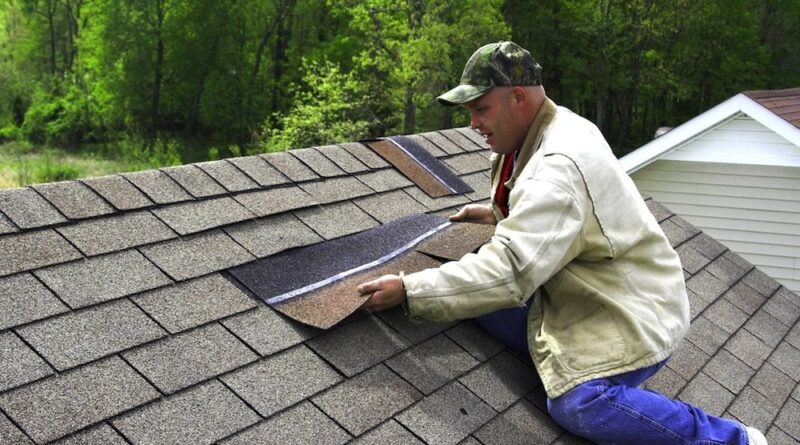6 Signs Your Roof Needs To Be Repaired or Replaced
A roof is one of the most important components of any home, yet it is often overlooked until a problem arises. According to industry data, the average lifespan of a roof is 15-25 years, depending on the material.
If your roof is approaching or exceeding this age range, it’s time to be on the lookout for signs you may need roof repairs or full replacement. This is especially important for homeowners in Arlington Heights, where weather conditions can take a harsh toll on roofs.
Located in the Chicagoland area, Arlington Heights experiences all four seasons. From heavy snowfall in the winter to sweltering heat in the summer, temperature fluctuations and extreme weather events in this region can accelerate wear and tear on roofs.
This article will cover the six most common signs that your Arlington Heights roof needs attention. Catching these issues early is key to preventing costly damage down the road. Let’s get started with what you should look for.
1) Age of the Roof:
As mentioned, most roofing materials last 15-25 years. If your roof is approaching or exceeding that age range, have it inspected by a professional roofer as soon as possible.
Even if there are no visible issues, the roof’s age likely means it’s time to replace it. Older roofs are much more prone to wear and tear, weathering, leakage, and failure. Replacing an aged roof before major damage occurs prevents much bigger problems and costs down the road.
A reputable Arlington Heights roofing company can examine the roof’s condition and advise if repairs may extend its useful life or if full replacement is the best option for your home. They can also discuss roofing material choices like asphalt, metal, tile, and shingles.
2) Visible Damage Like Cracking, Curling, or Missing Shingles:
Physical signs of deterioration on your roof’s surface indicate structural problems underneath. Curled, cracked, brittle, or otherwise damaged shingles that are loose, missing, or even falling off point to deterioration from sun exposure, wind, hail storms, heavy rainfall, or simple aging over many years. This visible roof damage will only continue spreading over time without proper repairs.
A professional roofer can inspect your entire roof surface and determine how widespread any issues are. They can then remedy damaged shingles through patching, sealing with roofing cement, or replacing individual shingles or sections.
Leaving cracked, curled, or missing shingles risks further damage from leaks, falling debris as shingles break apart, and accelerated deterioration of the roof deck beneath the damaged areas. Addressing visible shingle damage promptly keeps small problems from turning into very expensive headaches requiring full roof replacement later on.
3) Leaks and Moisture Inside the House:
If you notice stains, damp spots, peeling paint or plaster, or actual dripping from your ceiling, roof leaks are the likely culprit. Attic mold and mildew also often stem from prolonged roof leaks that allow moisture intrusion. Even a single small leak indicates some type of roof damage or compromised area that will continue to worsen over time if not properly repaired.
Allowing roof leaks to persist leads to structural harm to your home as water rots wood and seeps into walls or insulation. Stopping leaks quickly is essential to prevent major damage.
Beyond just patching over visible holes, substantial leaks or multiple leaks likely mean a full roof replacement is in order. Don’t ignore inside moisture issues – contact a professional roofer right away to inspect your roof and accurately track down and address the external root causes of any leaks.
The sooner you can pinpoint leak sources and repair roof damage, the less risk of water causing interior drywall, paint, plaster, insulation, and even structural damage to your home.
4) Poor Insulation and Energy Efficiency:
Seeing your energy bills creep up year after year may signify problems with poor roof insulation. Insufficient or degraded insulation coupled with leaks, gaps, and ventilation issues in an aging roof surface can seriously undermine the energy efficiency of your home.
This forces your HVAC system to work much harder to maintain desired indoor temperatures. Though many modern roofing materials provide good insulation when newly installed, the insulating properties degrade over time as the roof ages.
If your roof is outdated or you’ve noticed significantly higher heating and cooling bills even when adjusting your thermostat, poor roof insulation is likely the culprit. Heat loss through the roof in winter and heat gain in summer can waste a tremendous amount of energy.
Along with roof repairs, a new roof installation can often greatly improve insulation and energy efficiency, potentially cutting your energy bills to a significant extent. Upgrading to a highly insulated roof system pays dividends for years through lower energy costs.
5) Dark Streaks and Discoloration:
Dark streaks marring the surface of your roof are concerning. Known as algae streaking or fungal growth, these black or brown marks indicate mold, mildew, or algae taking hold of your roof. This usually stems from prolonged excess moisture exposure.
Besides being unsightly and potentially lowering your home’s curb appeal, fungal growth can gradually wear away and damage shingles over time by breaking down the protective mineral surface layer.
Mild fungal growth can sometimes be removed with a soft brush and bleach or fungicide solutions. However, extensive dark streaking or discoloration warrants a full professional roof inspection to check for damage and remedies to address the underlying moisture issue enabling the growth.
The fungus may come back quickly without fixing the root problem. Correcting poor roof ventilation, clogged gutters, leaks, or other moisture sources allows roof washing to be effective long-term.
6) Sagging Roof Deck:
A sagging, uneven, or sloped roof deck is a serious structural issue indicative of damage or deterioration of the underlying wood or roof deck material. Like leaks, sagging usually starts subtly but progressively worsens over time. As sagging becomes more pronounced, it leads to unevenness, inadequate roof drainage, pooled water, and eventually dangerous collapse dangers.
Heavy sagging or visible roof deck movement must be addressed immediately to prevent catastrophic failure. Often significant water damage, dry rot, problems with initial installation, or inadequate material quality are to blame.
Sagging over a large area or multiple portions of the roof often necessitates a total roof replacement, as repairs may not be feasible or fail to address the root issues. Consulting a structural engineer in addition to a roofer can help diagnose the cause and best solution in cases of severe roof deck sagging or failure.
Conclusion:
A roof is one of the most integral yet overlooked components of a home. It takes regular inspection and maintenance to catch issues before they snowball into major repairs or full replacement. Don’t delay – address any issues promptly to prevent small problems from cascading into very costly ones down the road. With some diligence and timely care, your roof can protect your most valuable investment – your home – for decades to come. Be proactive and stay ahead of roofing issues before they get out of hand.




